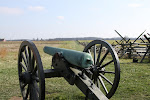(For the baseball and Louisiana Tech fans in the audience.)
Rebel Oakes led the way to the pros
When you think of Louisiana Tech athletes who went on to play professional sports in the "old days," stars like Terry Bradshaw, George Stone, and Mike Barber may come to mind.
Those Tech athletes from the 60's and 70's may not care to have their college careers viewed as ancient history, even though decades have passed since they donned a Bulldog uniform.
The old days—as far as the first time Tech sent one of its own to a pro ball club—go back nearly as far as the university itself.
The first steps in organizing a formal sports program at Tech were taken in 1901 when the first coach was hired. Coach Barber was responsible for all physical education on the campus, including the football, baseball, and basketball teams.
Baseball was one the first programs to get up and running at Tech and would be the first sport to send a player to the pros.
| |
Ennis Telfair Oakes was born in 1883 in the Arizona community near Lisbon, Louisiana and attended Tech—then called Louisiana Industrial Institute—sometime between 1902 and 1908. The exact dates are a little vague since no team records exist from that period. It appears Oakes may have attended Tech around the minor league baseball season as he played on teams throughout the country.
Oakes was a leader among student athletes at Tech and supported the sports program which received no state funding. In 1902, Oakes helped organize a football game to raise money for sports equipment. Spectators paid ten cents a head to watch Oakes lead the "Oakites" against the "Miminites" under the charge of fellow student Sam Mims.
The Tech sports program began in earnest around 1904 when additional land west of the college was acquired to serve as athletic fields. The students themselves had to chop brush and burn stumps to clear the fields. The work probably made for a good training regimen.
Oakes joined the Cincinnati Reds as an outfielder in 1909 and his speed earned him the moniker "Dixie Flyer." In his first year in the majors, Oakes batted .270 and was credited with only five errors in 120 games in the outfield for the Reds. After the season, he was traded to St. Louis in a five-player deal and inherited the nickname "Rebel."
Oakes played for the Cardinals from 1910 to 1913. In 1911, Oakes single-handedly dealt a devastating blow to the league-leading Phillies when he plowed into catcher-manager Red Dooin at home plate. Dooin, who led the team with a .328 batting average, suffered a broken leg and the Phillies never recovered, dropping to fourth in the league, 19½ games out of first place.
In 1914, Oakes joined the newly created Pittsburgh Stogies of the short-lived Federal League as a center-fielder. After a month of mediocre performance, Pittsburgh's manager was fired. Rebel Oakes was named the new manager and the team renamed the Rebels. Oakes continued to play as well, chalking up a .312 average for the season.
Pittsburgh Baseball Club - Oakes is third from left
1914 was a dismal year for the Rebels, finishing last in the nine team league. But Oakes brought the team back in 1915 to end the season in third place with an 86-61 record, only a half-game out of the league championship.
Oakes coached the Rebels for two years, posting a 147-145 record as the league's youngest manager. But the next year, the fledgling Federal League fell apart and the Rebels were dissolved.
The major league career of Tech's first pro athlete had come to an end. His career batting average over seven seasons was a respectable .279 and his venture into managing earned him notoriety not received by most players of the era.
Oakes brought recognition and credit to his hometown and his college. Tech was mentioned in news articles during his career. A 1915 issue of Baseball Magazine described Oakes as an "aggressive leader and inspiring player, who is respected by mates and opponents, too."
While Oakes was playing in the majors, baseball cards became a big hit. Cards did not come with chewing gum, however, but were inserted into packs of cigarettes. Today, a Rebel Oakes card is highly desirable, with some selling for thousands of dollars.
As an avid outdoorsman, he would return to his plantation near Homer during off-seasons. After retiring from baseball, Oakes ventured into oil exploration. In 1936, Oakes and his partner brought in the first well in the oil-rich Lisbon Field. The economic impact of the discovery changed north Louisiana forever.
Oakes died in 1948, but he left a legacy for future Tech athletes. Over a dozen Tech players have followed Ennis Telfair Oakes into major league baseball. His induction into the Tech Athletic Hall of Fame is long overdue.


















Matt, how do fake Cartier you explain to watch lover novices what is special about Dietrich? You and I agree that it takes some fake Patek Philippe experience and exposure to understand what particular designers such as Emmanuel Dietrich bring fake Panerai to the table. To newbies, his work might just seem different for the sake of being different. How might you fake Tag Heuer describe it?
ReplyDeleteMSJ: Dietrich has a conceptually driven design language that I typically only see at the “haute horology” level fake Audemars Piguet of watchmaking. Every Dietrich collection uses organic shapes and forms, resulting in a unique biomechanical looking watch. It sort of reminds me fake IWC of H.R. Giger, without being frighteningly fake Franck Muller dystopian.
Buy now fake rolex
ReplyDelete